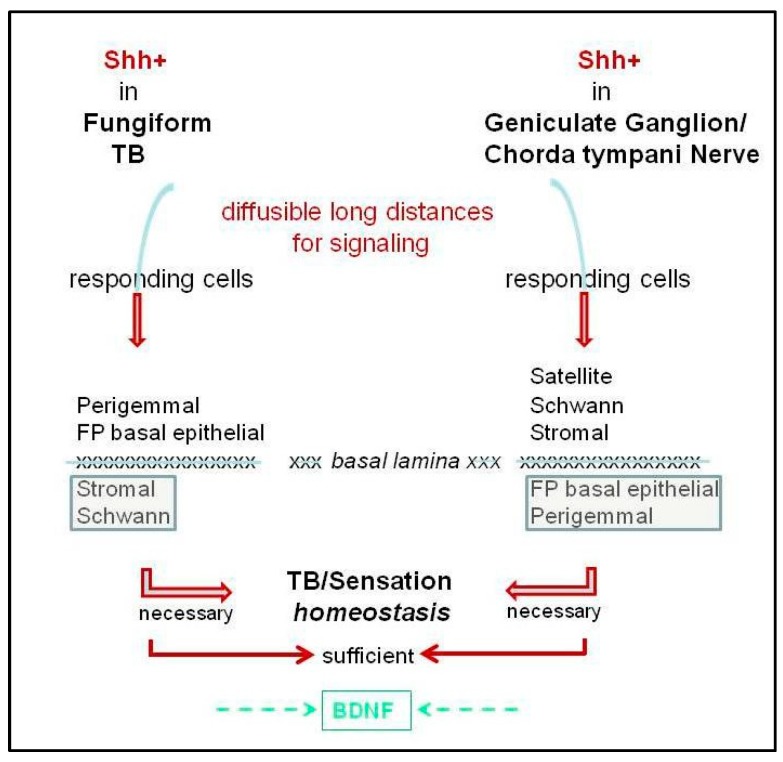Figure 4.
Proposed Hh signaling from Shh ligand in fungiform papilla taste bud and in innervation. Each is necessary for taste bud homeostasis, but only signaling from both is sufficient. The Shh ligand is within taste bud cells (TB) and geniculate ganglion neurons/chorda tympani nerve fibers. The ligand can signal over long distances to responding cells in different compartments of the fungiform papilla and ganglia and tongue. Paracrine signaling from Shh in TB cells has been demonstrated [1,3,13] and signaling from Shh in ganglion/nerve fibers is proposed [3,4,6,13]. If Shh is sequestered within or can traverse the basal lamina, then signaling from both sources will potentially cross to compartments beyond the papilla epithelium (left) or nerve/stromal tissues (right). We propose that signaling in the epithelium and via innervation each is necessary for TB homeostasis and sensation, but only together are they sufficient. BDNF is added at the bottom of the diagram to acknowledge the roles of this neurotrophin in TB homeostasis [57,58,59].

